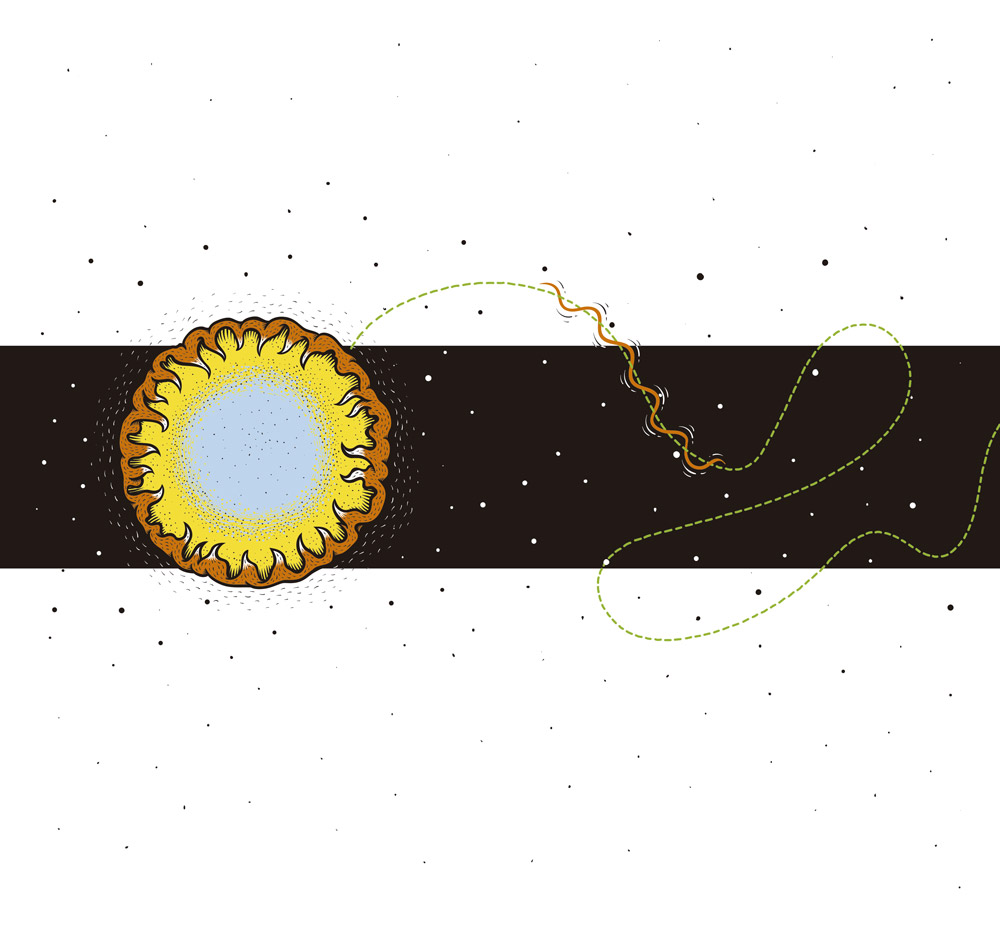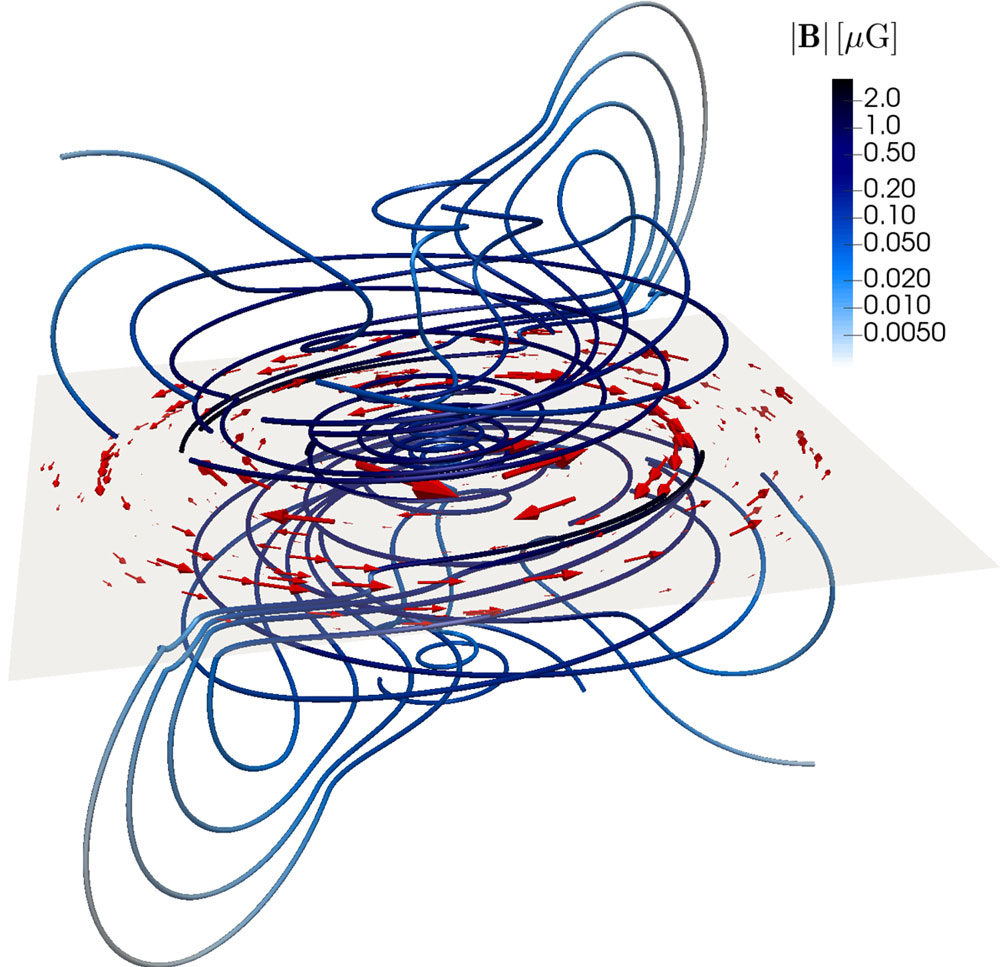How do cosmic rays reach the Earth, and why do they arrive from all directions equally?
Cosmic rays are high-energy particles that arrive at Earth in all directions from our galaxy - and even further in the case of those of higher energies. This is the plausible story of a typical cosmic-ray particle, a proton accelerated in our galaxy by moving magnetic fields that collides with the Earth's atmosphere after a journey of millions of years.
In a supernova remnant at the other end of our galaxy, a proton is accelerated to almost the speed of light by repeatedly bouncing off the magnetic fields of a shock wave.
After travelling an immense distance, guided by much weaker magnetic fields across the galaxy, the proton collides with the nucleus of an atom in the Earth's stratosphere, giving rise to a shower of particles that travel towards the surface at near-light speeds.
Among them is a muon (μ) created, as confirmed by Arturo Duperier, at an altitude of about 16 km, above where passenger planes fly, enters the Museum some 50 millionths of a second later, passes through our detector and is recorded in a counter.

Fig. 1 A particle of the primary cosmic rays starts its path near a supernova and then follows the magnetic field lines. Image: Wearbeard
Apart from the low-energy particles associated with the 'solar wind' and solar flares - which produce, for example, the aurorae - cosmic rays come from outside our System. We know this because if they came from the Sun, their intensity would not be nearly the same at night and during the day, which is what actually happens.
The vast majority of the cosmic rays we detect come from our own galaxy. Once accelerated, the charged particles move under the influence of the magnetic fields that pass through it. The higher the energy of a particle, the less the field deviates it from a rectilinear trajectory. It is almost certain that those with less than 1015 eV have such curved trajectories that they are trapped in their birth galaxy.
These fields extend into the galactic halo and, apart from the disc component - where the Sun and most of the stars reside - their spatial distribution is chaotic, so the galactic cosmic rays that reach us guided by the field lines (see figure) do not follow direct trajectories from their sources, but tangled and random paths until they, reach the Earth, doing it from all directions equally.

Fig. 2 Simulation of the galactic magnetic field. Shown in red is the "ordered" component of the spiral arms and in blue is the chaotic component extending into the halo. Figure 11 from Shukurov, A., Rodrigues, L. F. S., Bushby, P. J., Hollins, J., & Rachen, J. P. (2019). A physical approach to modelling large-scale galactic magnetic fields. Astronomy & Astrophysics, 623, A113. Reproduced with permission ©ESO
Once close to the Solar System and then to the Earth, the effects of solar and terrestrial magnetic fields that might break this symmetry start to be felt, but cosmic rays of a certain energy – such as those we detect here - are hardly affected by them.

